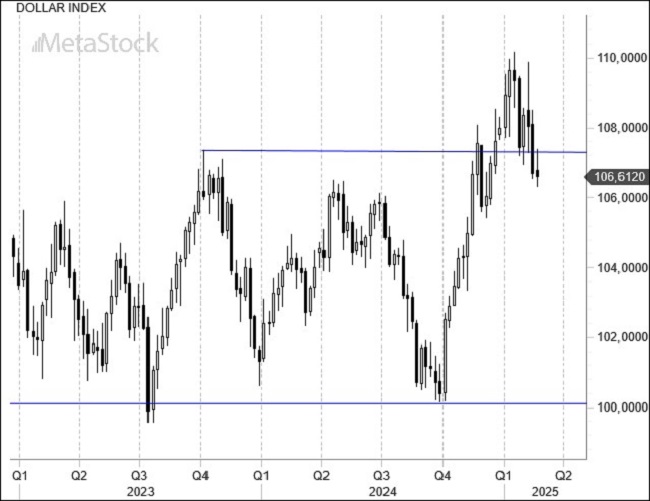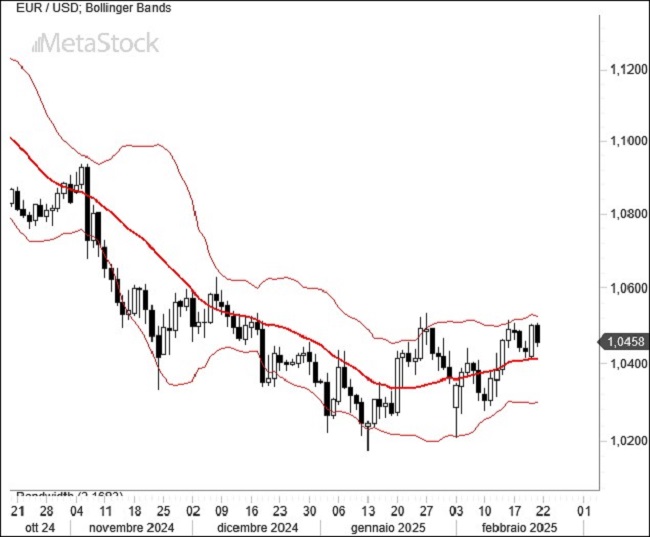- Trump has decided to temporarily abandon Europe, moving closer to Russia on the Ukraine issue and to China on global trade. These bewildering decisions undermine decades of shared political, economic, and value-based ties with Europe, which risks becoming isolated.
- Europe is in shock following Trump’s firm refusal to continue supporting the war in Ukraine. Internal divisions within the continent, along with the upcoming German elections, represent the first real test recent history has placed before Europe.
- EUR/USD currently shows little impact from the geopolitical crisis, with the expected stall below resistance levels confirming the ongoing bear market for the euro.
Trump’s Strategic Shift
By choosing to abandon Ukraine to its fate and pursuing peace solely with Russia, Trump has decided to leave the Eastern European country at the mercy of a conflict that, without U.S. assistance, already has a predetermined conclusion. But the break is not only with Ukraine—it is also with Europe, which Trump now calls to account. After years of moral attacks against him and his policies, Europe has been dealing with internal divisions that have consistently required U.S. financial support to resolve geopolitical issues nearby.
It’s difficult to predict what will happen next. Despite French President Macron’s attempts to bring leaders together at a conference, Europe remains fragmented, and the outcome of the upcoming German elections will likely determine whether a stronger interlocutor can emerge at the table. Without substantial aid packages for Ukraine, Russia will likely win the war, positioning a declared enemy at Europe’s borders. Yet, at the same time, sending aid would harm a continent already deep in debt and facing economic stagnation.
In the week just passed, macroeconomic data received little attention, as Trump once again dominated the headlines with his announcement of new tariffs on imports of cars, pharmaceuticals, and chips, set at 25%, a move that will impact both Europe and Asia—major suppliers of these products to the U.S.
The minutes of the Federal Reserve’s January monetary policy meeting provided perhaps the most interesting news, confirming that inflation remains elevated, and job market growth is strong, justifying the current stagnation in interest rates. However, Trump’s new executive orders cast doubt on whether the U.S. central bank will be able to maintain its independence in the future.
Meanwhile, in Frankfurt, the ECB is beginning to show signs of resistance to further interest rate cuts, perhaps aware that ongoing geopolitical shifts could disrupt the disinflationary process within the Eurozone.
Technical Analysis: EUR/USD Resistance at 1.05 and Dollar Index Uncertainty
The EUR/USD exchange rate has elegantly moved from the 1.02 support level we identified as crucial to avoid a drop below parity, up to resistance levels around 1.05.
Here, the double test has confirmed the strength of this level, beyond which the euro would open the door to a potential trend reversal. For now, there are no clear signals—either upwards or downwards—that could suggest a precise directional move in the coming weeks. It’s evident that the evolution of geopolitical scenarios is now key to understanding how governments and central banks will act in the months ahead, including in currency markets.

The Dollar Index may be the clearest illustration of the uncertainty prevailing in the currency market. DXY appeared to form a double bottom after breaking the 107 mark, only to reverse course, leaving the situation in doubt.
Currently, there are no signals to halt or reverse the long-dollar trade, but a decline in the exchange rate below the 106 support (2024 high) could have significant implications for the U.S. dollar’s trajectory over the coming months.
Another currency dynamic to watch closely.



Leave a Reply
You must be logged in to post a comment.